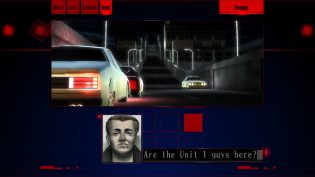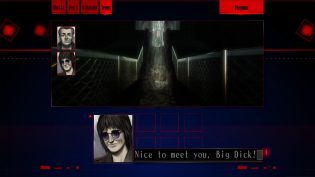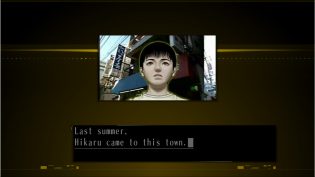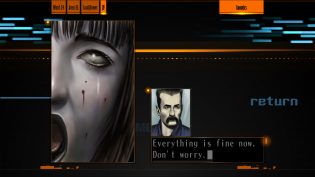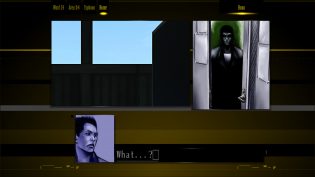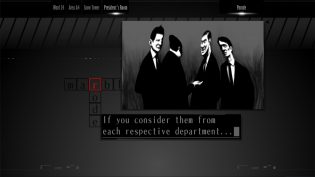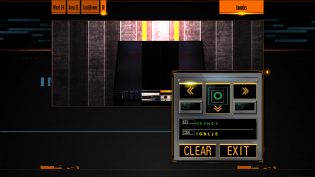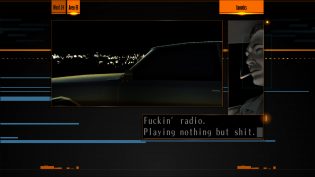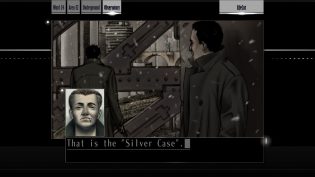A decade before gaining international recognition with killer7, Goichi Suda was writing for Human Entertainment and the games that to this day remain Japan-exclusive. After getting some fame (or infamy) with his bleak storyline for a wrestling game, he got a directorial role with the first two horror themed adventure titles in the Twilight Syndrome series. Following that, Suda51 decided to split with Human (a timely decision since the company went bankrupt a few years later) and founded Grasshopper Manufacture, the company he’s still associated with. The very first project they made? Japan-only Playstation 1 adventure/visual novel title called The Silver Case (prior to this official localisation also known as The Silver or Silver Jiken).
This was the game that fully established the recurring themes of Suda51 games, like “Kill the past”, introduced several of the recurring characters and concepts, the seemingly shared universe (it’s occasionally self-contradicting though) and other elements that can be traced even in the most recent Travis Strikes Again: No More Heroes. And it remained Japan-only until 2016 where a PC port was suddenly released, followed next year by an updated version with further enhancements and story episodes released for PS4 (and as a free update on PC). Playing this game now, 20 years since its release and being more familiar with the games Suda51 would work after is a curious experience. But not a particularly pleasant one.
So… what the hell is The Silver Case? Technically, it works most like a visual novel, with occasional first person adventure game elements, things that were common in Japanese adventure titles since forever and can still be found in recent titles like Danganronpa games. Yet, things that are most commonly associated with both VNs and adventures are missing, either completely or most of the time. You never make any choices in this game, for example, and there are no multiple storylines or endings. And puzzles or item usage is also almost completely missing from the game. And when they are present they feel out of place and really annoying. So, to describe the gameplay of The Silver Case, I’d rather say that it’s an “interactive story” where “interactive” doesn’t mean player choice, rather where story simply stops dead in its track until it receives the expected player input.
It’s certainly one of those “wouldn’t it be a better story with no interactions?” type of deals, where I can most certainly say that the videogame format fits the style and tone really well, yet any attempts at “gamifying” the experience beyond a simple “press a button to advance the line of text” were completely unnecessary. The controls are clunky, the puzzles when they appear, are more of an annoyance than a puzzle, greatest example being the very first chapter of the game where the “hacking” puzzle is just annoying to solve, not difficult. Luckily, you often have a button that just solves the “puzzle” for you, so there’s that. No one can “solve” the annoying movement or “guess where you have to stand and where to look” moments, though, which are also found way too often in the game and add nothing but frustration. It’s not like the concept of this kind of control scheme is terrible, the already mentioned recent Danganronpa titles made it work surprisingly well, for example, but the way it’s used in The Silver Case is just inconvenient, seemingly for the sake of being inconvenient.
This would’ve been okay if the storytelling was good, but that’s where the biggest annoyance lays. Suda’s style of writing, turns out, simply doesn’t fit to text-based storytelling at all, at least when he tries to write what would work for a real-time acted cutscene, and then present it as a slow text-only dialogue that can drag on and on and on. Imagine a killer7 cutscene (or your typical Tarantino off-topic banter), except it goes for longer, it has no voice acting or dynamism to it and is presented to you slowly line after line. A curious “out there” pseudo-philosophical banter that can work as a cute side-track that takes half a minute in killer7 is turned into 5-10 minutes of dry text. That clearly goes nowhere and just wastes your time.
Probably, the biggest offender in The Silver Case is exactly that – it’s continuously wasting your time on things that go nowhere, often barely make any sense or feel completely meaningless. Like area/time transitions for every few seconds, especially in the Placebo side of story. The aforementioned moments where the story just stops until you guess what series of pointless actions the game expects you to perform before it continues. The entire chapters of the story where nothing happens. Bizarre dialogues that go nowhere and make no sense. Characters that may be seemingly following some story of their own and developing only to then do something out of place. Or die for no reason. The game looks and sounds really cool, but for all its style, there’s barely any substance to keep it going for as long as it’s going. And it’s far, far, painfully longer than it ever has a reason to be.
If for whatever reason Suda51 stopped doing “his thing”, dropped this “universe”, these themes and common ideas, The Silver Case would’ve remained a really curious beast to check out. Something not enjoyable to go through, but interesting enough to learn, to get inspired by. But Suda51 didn’t sit idle and even killer7 that feels like it was built on the exact same basics and even has a lot of the same issues, is simply a straight up better game that’s still fun and enjoyable today. A far better mechanical fit for Suda’s ideas than The Silver Case ever could be. If this title would’ve been remade entirely, with the same cool visual style mixing FMVs, 3D cutscenes and 2D art, but with a script that’s written so it’s fun to read and follow, it could be a fun game. As is, though? Just not worth the patience it requires to go through it all.




